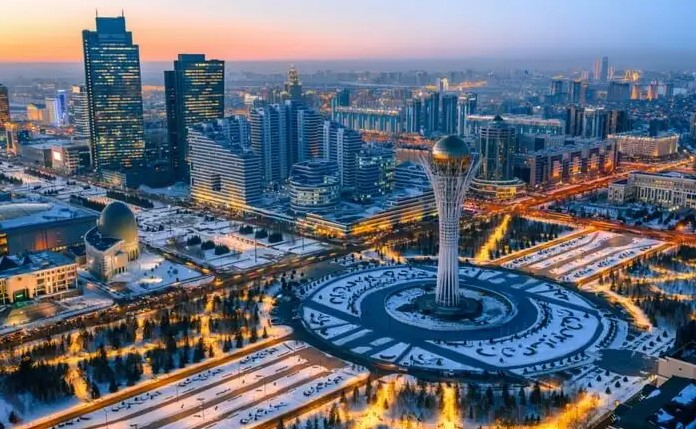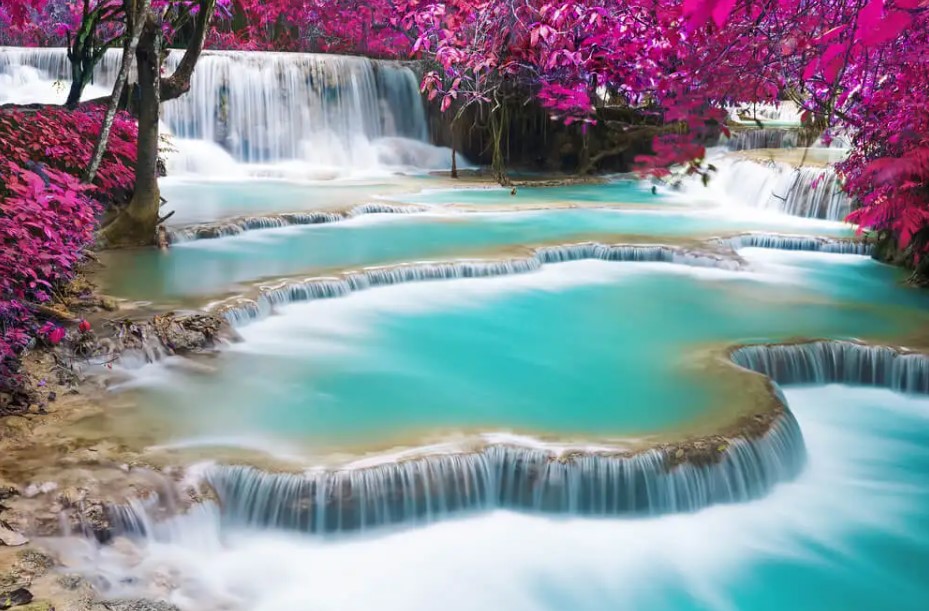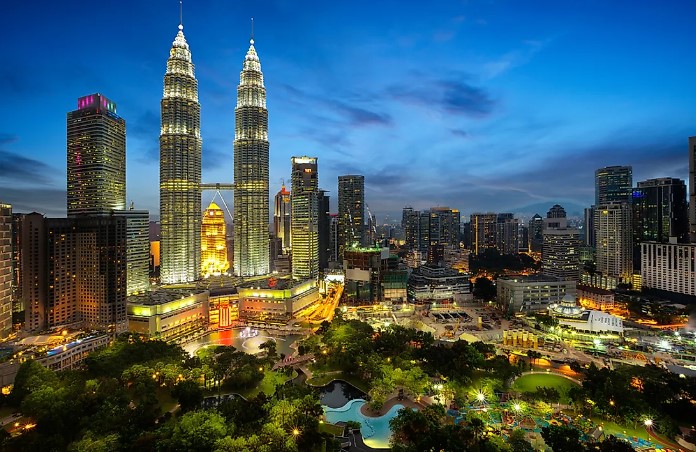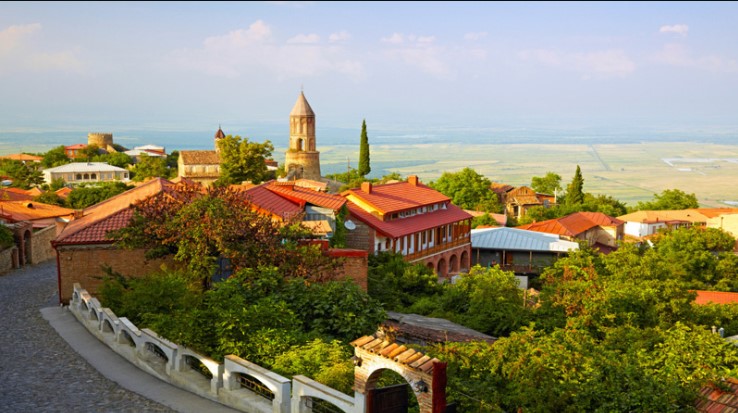Here are some of the most beautiful places to visit in Turkey tourist attractions. This list of the most beautiful places to visit in Turkey will be a magical event during your visit. However, in this article, I discuss the top 10 most beautiful places to visit in Turkey tourist attractions. So, continue reading and discover these prettiest & most beautiful places to visit in Turkey tourist attractions!
01. Hagia Sophia
Hagia Sophia, officially the Hagia Sophia Grand Mosque, is a mosque and major cultural and historical site in Istanbul, Turkey. The cathedral was originally built as a Greek Orthodox church that lasted from 360 AD until the conquest of Constantinople by the Ottoman Empire in 1453.
It served as a mosque until 1935, when it became a museum. In 2020, the site became a mosque again. The present structure was built by the Eastern Roman Emperor Justinian I between 532 and 537 as the Christian Cathedral of Constantinople for the state church of the Roman Empire and was designed by the Greek geometers Isidore of Miletus and Anthemius of Tralles.
It was officially called the Church of the Holy Wisdom and upon completion became the world's largest interior and among the first to employ a fully pendentive dome.
It is considered the epitome of Byzantine architecture and is said to have "changed the history of architecture". The present Justinianic building was meant to occupy the third church of the same name, as the previous one was destroyed in the Nicaea riots.
02. The Blue Mosque
The Blue Mosque of Istanbul, also known by its official name, Sultan Ahmed Mosque, is a historic Ottoman-era imperial mosque located in Istanbul, Turkey. A functioning mosque, it also attracts a large number of tourist visitors. It was built between 1609 and 1616 during the reign of Ahmed I.
It has Ahmed's tomb, a madrasa and a dharamshala in its courtyard. Hand-painted blue tiles adorn the inner walls of the mosque and at night the mosque is bathed in blue as the illumination of the mosque's five main domes, six minarets and eight secondary domes.
It is located next to the Hagia Sophia, Istanbul's main mosque until the construction of the Blue Mosque and another popular tourist spot. The Blue Mosque was included in the UNESCO World Heritage List in 1985 under the name "Historic Area of Istanbul".
03. Galata Tower
Galata Tower, officially the Galata Kulesi Museum, is an old Genoese tower in the Galata section of the Beyoğlu district of Istanbul, Turkey.
Built as a watch tower at the highest point of the Walls of Galata, the tower is now an exhibition space and museum and a symbol of Beyoglu and Istanbul.
04. Grand Bazaar
Istanbul's Grand Bazaar is one of the largest and oldest covered markets in the world, with 61 covered streets and over 4,000 shops in a total area of 30,700 square meters, attracting 250,000 to 400,000 visitors per day.
In 2014, it was listed as number 1 of the world's most visited tourist attractions with 91,250,000 annual visitors. Istanbul's Grand Bazaar is often considered one of the world's first shopping malls.
05. Miniaturk
Miniaturk is a miniature park located on the northeast bank of the Golden Horn in Istanbul, Turkey. It was opened on May 2, 2003. It is one of the largest miniature parks in the world with a model area of 15,000 m² and a total area of 60,000 square meters.
It contains 135 models at 1:25 scale, with explanations of structures and historical structures in and around Turkey. 40,000 m² of open space in the total area of the park; 3,500 m² covered; and 2,000 m² with pools and waterways. Its parking lot capacity is 300 cars.
Among the park's structures are 60 in Istanbul, 63 in Anatolia, and 13 in the Ottoman region outside of what is today Turkey. Also featured are historical structures such as the Temple of Artemis at Ephesus and the Mausoleum of Mauslos at Halicarnassus. Additional space reserved for future models.
06. Anıtkabir
Anıtkabir is the mausoleum of Mustafa Kemal Atatürk, the leader of the Turkish War of Independence and the founder and first president of the Republic of Turkey.
It is located in Ankara and was designed by architect Professor Emin Onat and Assistant Professor Ahmet Orhan Arda, whose proposal defeated 48 other entries from various countries in a competition held by the Turkish government in 1941 for a monument to Atatürk.
The site is also the final resting place of Turkey's second president Ismet Inonu, who was buried there after he died in 1973. His mausoleum faces the Atatürk mausoleum on the opposite side of the ceremonial grounds.
The mausoleum was depicted on various Turkish banknotes in the period 1966–1987 and 1997–2009 and was included in the Turkish Chamber of Civil Engineers' list of 50 Civil Engineering Achievements in Turkey, a list of outstanding engineering projects implemented in the first 50 years.
07. Grand Mecidiye Mosque
The Ortakoy Mosque or Buyuk Mesidiye Kami, located in Beşiktaş, Istanbul, Turkey, is a waterside mosque in Ortakoy Pier Square, one of the most popular sites on the Bosphorus.
It was commissioned by the Ottoman Sultan Abdulmecid I and its construction was completed around 1854 or 1856. This structure is emblematic of the Ortakoy district as it has a distinct view of Istanbul's Bosphorus Strait and Bosphorus Bridge. The mosque can be seen from Bosphorus cruises and ferries.
08. Galata Bridge
The Galata Bridge is a bridge that spans the Golden Horn in Istanbul, Turkey. Especially since the late 19th century, the bridge has featured in Turkish literature, theater, poetry and novels.
The current Galata Bridge is the latest in a series of bridges connecting Eminunu in Fatih District and Karaköy in Beyoğlu since the early 19th century. The current bridge, the fifth on the same site, was built in 1994. The bridge was named after Galata on the northern bank of the Golden Horn.
09. Phaselis Ancient City
Phaselis or Phaselis was a Greek and Roman city on the coast of ancient Lycia. Its ruins are located north of the modern town of Tekirova in Kemer District, Antalya Province, Turkey.
It is located between the Bay Mountains and the forest of Olympos National Park, 16 kilometers south of the tourist town of Kemer and the 57th kilometer of the Antalya-Kumluka highway. Phaselis and other ancient cities around the shore can also be accessed from the sea by daily yacht trips.
10. Zeugma Mosaic Museum
The Zeugma Mosaic Museum in Gaziantep, Turkey is the world's largest mosaic museum, with 1700 square meters of mosaics. It was opened to the public on 9 September 2011. The 30,000 m² museum contains 2,448 m² of mosaics and replaces the Bardo National Museum in Tunis as the world's largest mosaic museum.
The museum's Hellenistic Greek and Roman mosaics focus on Zeugma, which is said to have been founded as Seleucia by Seleucus I Nicator, after serving as a Hetyroi military officer in the army of Alexander the Great, the founder of the Seleucid Kingdom.
The treasures, including the mosaics, were relatively unknown until 2000 when artifacts appeared in museums and when plans for a new dam on the Euphrates meant that much of Zeugma would be flooded. As of 2011, many of the mosaics remain covered and teams of researchers continue to work on the project.
















































































































































